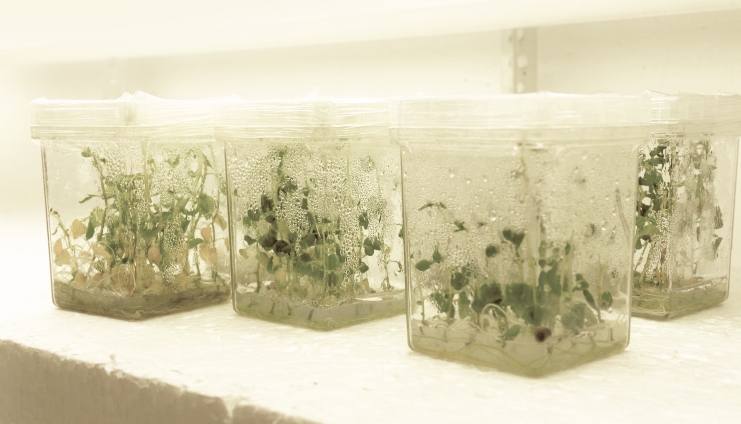Biostimulant

What are they?
BIOSTIMULANTS are products whose function when applied to plant or the rhizoshpere is to
stimulate natural processes to enhance / benefit nutrient uptake, nutrient efficiency,
tolerance to abiotic stress & crop quality.
biostimulants are one of the most important category of products for agriculture industry in today’s time with the increasing awareness for the organic or naturally produced produce; taking this in consideration
Ministry of Agriculture, Cooperation & Farmer Welfare has introduced an Amendment Dated 23rd February 2021, in the Fertilizer (Control) Order,1985 for inclusion of BioStimulant products.
According to which, biostimulants products specified in Schedule VI shall be classified under any of the following categories:
Botanical Extracts, including seaweed extracts
Biochemicals
Protein Hydrolysates & Amino Acids
Vitamins
Cell-Free Microbial Products
Antioxidants
Antitranspirants
Humic & Fulvic Acid and it's derivatives
Why are they important?
There is a growing concern developing with regard to the environmental impact of the agricultural sector and its production systems and, which has created an urgent need to develop more sustainable, environmentally friendly crop production processes.
Biostimulants are the solution to the above concern, as it claims to improve nutrient use, uptake and utilization efficiency.
With the increase in awareness of bioimplants, the farmers and producers will rely less on the use of synthetic fertilizers to increase the quality of their products. As there is negative impact of synthetic products on the environment. For example, synthetic fertilizers:
Leaching from soil into major bodies of water (lakes, streams, rivers, etc) and can impact aquatic ecosystems
Kill beneficial microorganisms in the soil that can convert plant remains into high quality, nutritious organic matter
One thing which everyone should be made aware is that biostimulants can be used as substitute for fertilizers or in addition of fertilizers.
Biostimulants are also known to enhance the tolerance of plants and crops to abiotic stresses, such as drought, salinity and instances of exposure to extreme temperatures.
What is the key challenge?
Despite being used for decades in the agricultural sector, there is no one definition or classification of of biostimulants and how they function. One of the major reason for it is the the divide of continents and their differing claims on the capabilities of biostimulants in improving overall crop/plant health and nutrition.
In Europe, as made claim to in Regulation (EU) 2019/1009 of the European Parliament and of the Council of 5 June 2019 laying down rules on the making available on the market of EU fertilising products, biostimulants are defined as:
‘…an EU fertilising product the function of which is to stimulate plant nutrition processes independently of the product’s nutrient content with the sole aim of improving one or more of the following characteristics of the plant or the plant rhizosphere:’
Nutrient use efficiency
Tolerance to abiotic stress
Quality traits, or
Availability of confined nutrients in the soil or rhizosphere
However, in North America, two key definitions co-exist. The first, proposed by Congress in the 2018 farm bill define biostimulants as:
‘a substance or micro-organism that, when applied to seeds, plants or the rhizosphere, stimulates natural processes to enhance or benefit nutrient uptake, nutrient efficiency, tolerance to abiotic stress, or crop quality and yield.’
The second definition, proposed by the Environmental Protection Agency (EPA) in their 2019 draft guidance define biostimulants as:
‘a naturally-occurring substance or microbe that is used either by itself or in combination with other naturally-occurring substances or microbes for the purpose of stimulating natural processes in plants or in the soil in order to, among other things, improve nutrient and/or water use efficiency by plants, help plants tolerate abiotic stress, or improve the physical, chemical, and/or biological characteristics of the soil as a medium for plant growth.’
What is the future?
Biostimulants seem to be need of the hour with the environment impact which it has, currently it has a widespread implementation and has exciting prospect.
INDIA is the newest member to introduce the regulation for Biostimulant and recognise its entity as different from the traditional fertilizers available.
If the biostimulant product is already on the Indian market, the manufacturer / importer must first obtain the provisional certificate to be able to continue on the market, with a two-year extension, requesting it from the state agriculture department before September 30, 2022. During these testing must be done to obtain the data requirements as per the regulations.
Any new Biostimulant product must be included in Schedule VI of the regulations.
No person shall manufacture or import any Biostimulants unless it is included in it.
For such registration of biostimulant products the following information is required to be generated and submitted to the regulatory authorities:
- Chemistry
- Bio efficacy
- Toxicity
- Heavy metal content
- Report on no pesticide residue in the product
Similarly EU has also introduced Regulation on Biostimulants:
On the 25 June 2019, the EU adopted Regulation (EU) No 2019/1009, i.e., the new EU Fertilising Products Regulation. The current legal framework applicable to fertilising products is Regulation (EC) No 2003/2003. The new Fertilising Products Regulation comes into full regulatory force on 16 July 2022.
Ross Lifesciences may help the Indian Exporters/Manufacturers, who are looking for placing their products in EU market by:
- (1) Generating data to support a biostimulant claim;
- (2) Using data either to support placing a biostimulant on the EU market and/or to support commercial product claims.
- (3) Preparing Chemical Safety Report as per the requirements of REACH Regulation
- (4) Carrying out Conformity Assessment Process